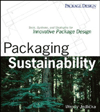Toppan Leverages Supercritical Fluid to Develop Ultra-Thin-Walled Injection Molded Container

Samples of Toppan’s new ultra-thin-walled injection molded containers. Image courtesy of Toppan Printing Co., Ltd.
Toppan Printing (Toppan) says it has used supercritical fluid1 and its original molding technology to develop an ultra-thin-walled container roughly 30% thinner than conventional injection molded plastic. The new container is an addition to Toppan’s “SUSTAINABLE-VALUE Packaging” lineup, which is part of the recently launched “TOPPAN S-VALUE Packaging” range targeting added value for society and fulfilling living. Samples will be made available in Japan for manufacturers in the foods and toiletries sectors.
Reduction of plastic resin consumption for injection-molded containers requires the minimum possible thickness when molding is performed, and it has presented challenges in terms of costs, durability and the feasibility of mass production. Thermoforming has generally been considered better for producing containers that need thin walls, but it does not offer the same scope of possibilities for design as injection molding.
Toppan says it has developed a new technology making it possible to exceed the conventional limit of injection molding and form products with a reduced thickness close to that achieved by thermoforming. Supercritical fluid is dissolved in molten resin to ensure that it efficiently reaches every corner of the injection mold. This means lighter containers with thinner walls while ensuring freedom for shape and design.
Due to the combination of supercritical fluid and Toppan’s original molding technology, the thickness of the wall of injection molded items can reportedly be reduced by approximately 30%, from 0.5 mm to 0.35 mm. This makes it possible to reduce plastic consumption by up to 30% while helping to lower CO2 emissions associated with resin manufacture. In the case of a prototype margarine tub, CO2 emissions during manufacturing decreased by about 20%.
As fluidity of the resin injected into the mold is improved, the technology also enables the use of more eco-friendly plastics, such as biodegradable resin and biomass polyethylene, which have previously been difficult to mold. Despite the reduction in thickness, strength is maintained, as is the scope to design containers in a wide range of shapes matched to their use.
“This new technology enables the production of containers that offer all the benefits of conventional injection molding but with reduced impact on the environment,” says Toshiaki Kakemura, general manager of plastic development in Toppan’s packaging solutions business. “We will expand sales to manufacturers of food and toiletries and continue to drive sustainable solutions for society and growth for our customers’ business through the TOPPAN S-VALUE Packaging range.”
1 A supercritical fluid is a substance at a temperature and pressure above its critical point that has both gas and liquid properties.
Looking for a reprint of this article?
From high-res PDFs to custom plaques, order your copy today!









